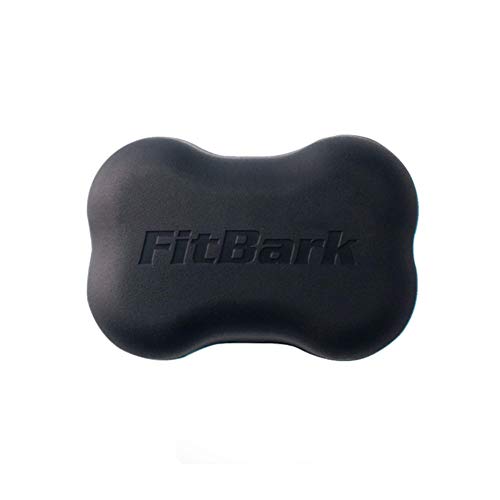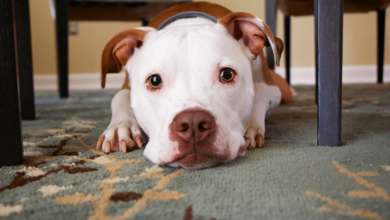FitBark Dog Activity Tracker Offers Strong Nontraditional Tracking

- This post contains affiliate links. Read more here.
- Not a substitute for professional veterinary help.
Dog activity trackers are all the rage these days, and for good reason. The latest fitbit-style devices for dogs are designed to provide in-depth insights into your pup’s health, behavior, and activity levels. Some even include GPS features, allowing you to set up geo-fencing, escape alerts, and real-time tracking.
But not all health and location trackers are built alike—and there are a lot of options out there that prioritize different perks. We investigated the FitBark, one of the most popular dog activity and location trackers on the market for both its lightweight design and comparatively affordable price.
As the pet parent of a reactive and anxious dog who rarely takes traditional neighborhood walks, I was interested to see how well the FitBark tracked our daily movement—from chewing on sticks to slow sniffy walks, and all the mental enrichment between. I was also curious about how well the GPS features would hold up in a more rural setting.
Roo—a Lab/Terrier rescue mix—and I spent two weeks trying out the FitBark GPS to determine how it compared to other activity and location trackers. Read on for our review!
-
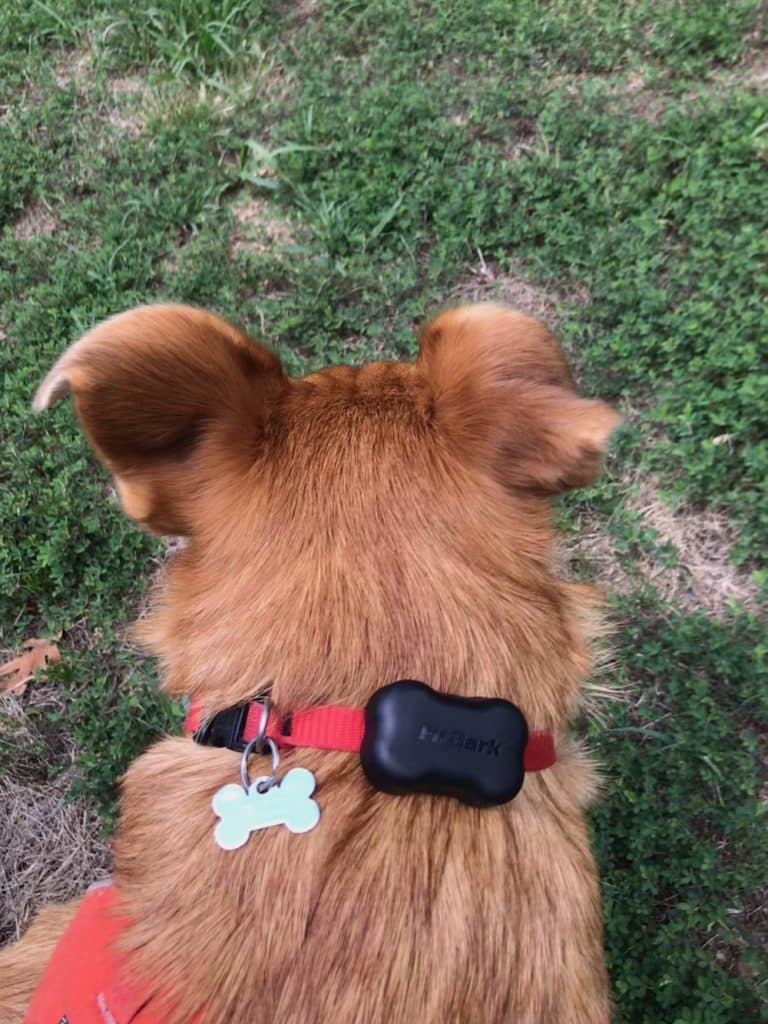
Roo finds a place for the FitBark GPS amid her neck floof.
The FitBark arrived in a compact package with ten zip ties, two covers, a charger, and straightforward setup instructions:
- charge the device for two hours
- download the FitBark app to your phone
- create a profile for your pup (based on breed, weight, and age)
- add yourself and any other caregiver as a user
You can also sync your Fitbit, Apple Watch, HealthKit, or Google Fit device to your profile, and ask other pet parents in your circle who use a FitBark to add you as a friend. Or use the “discover new friends” feature to add up to 50 new dogs to your pack each week.
-

Clover looks ready for some friendly competition.
Lightweight Design
FitBark loves to tout their lightweight design, claiming the device can fit dogs of all sizes from five to 240 pounds. Weighing a mere 16 grams, the FitBark GPS is one of the lightest dog activity trackers on the market—making it a good option for smaller dogs, especially when compared to competitors like the Whistle, which recommend pets weigh at least 20 pounds to wear their device.
Upgrading from the original loop-tie method that some reviewers complained was easy to knock off, the latest version of the FitBark uses two zip ties to attach the device directly to most collars with a width of up to 1.5 inches. A small bone-shaped cover snaps over the device, protecting against scratches and adding an extra layer of cuteness.
While I appreciated how the zip tie and cover method kept the FitBark GPS securely in place, especially on my rambunctious pup, I found this to be one of the most annoying features. The cover was hard to snap on and even more difficult to take off, which needs to be done every time you charge the device. You also have to cut the zip ties and reapply them again if you switch collars or want to throw yours in the wash.
On the plus side, Roo wasn’t fussed at all by the design and didn’t even acknowledge that a new device had been added to her neck floof.
-

Roo wonders if the FitBark tracks derpy smiles.
Durable and Waterproof
Waterproof and “tug-of-war certified,” the FitBark GPS is made of high-impact polycarbonate that’s designed to withstand rugged adventures both on land and in the water. It has an IP67 rating, which means it can be submerged underwater for 30 minutes (up to one meter).
Roo and I tested this with a dip in the creek and a few romps in torrential Midwestern downpours. The device held up … dare we say, swimmingly.
-

Roo and Elizabeth take a romp in the river with the FitBark.
The FitBark’s Battery Life
Extended battery life is one of the biggest upgrades FitBark made with the Generation 2 design. FitBark GPS now states that a two-hour charge lasts most pups three to five weeks. They do recognize, however, that different factors like Bluetooth proximity and Wi-Fi and cell signal can affect battery use.
In our experience, a two-hour charge only lasted one week. But to be fair, we had a lot working against us. We’re currently staying in a rural location where Wi-Fi can act up and a cell signal is near impossible at times. I would also often leave my phone inside the house while we romped around the property, making the device use more battery without the Bluetooth connection.
FitBark Location Tracking
The FitBark App has the option to create multiple safe zones using familiar WiFi networks (at home, doggy daycare, your mom’s house, etc.). You can also add other users to the app like your trainer, dog walker, and family members. Each time your pup leaves and enters a safe space, the FitBark app should send you a notification and let you know whether or not they’re with one of your assigned caregivers.
Once your dog leaves a WiFi safe zone, FitBark offers real-time tracking via Verizon, AT&T, and T-Mobile networks, claiming to give one-minute updates until you’ve reunited with your dog.
One thing to keep in mind is that the location tracking features only work in the U.S., unlike other GPS trackers like the Tractive, which offers worldwide coverage.
Health Monitoring
The FitBark GPS tracks every move your pup makes, as long as she’s wearing the device, of course. Gathering information 24/7, the FitBark breaks down data into daily, weekly, and monthly views, giving you in-depth insight into things like your dog’s sleep quality, distance traveled, calories burned, and overall physical activity.
Over time, the app collects a more detailed report and baseline, alerting you to changes that could indicate health and behavioral issues like anxiety, skin diseases, or mobility problems.
-
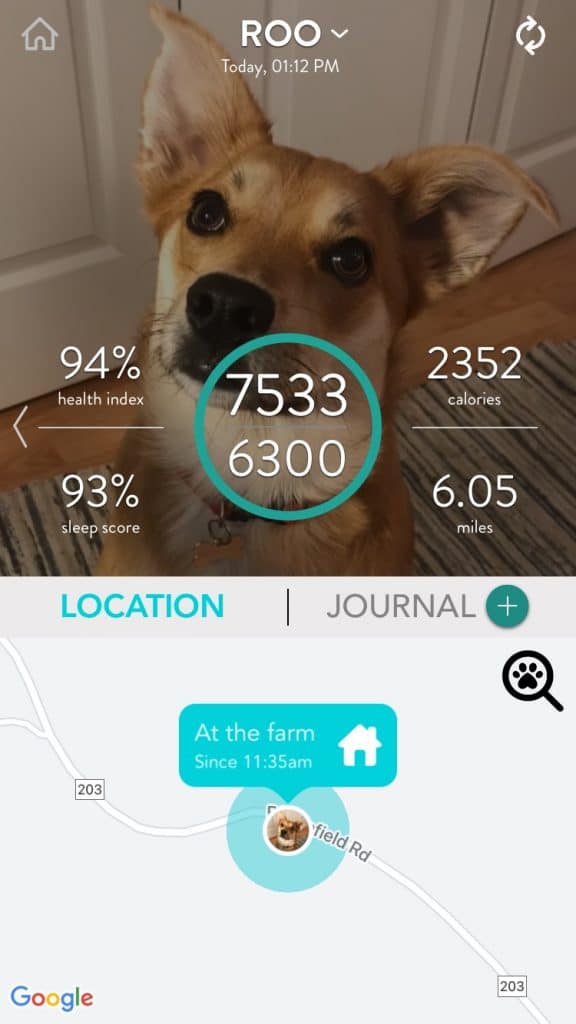
A snapshot of Roo’s activity and location for the day.
FitBark GPS Subscription Options
The FitBark GPS requires a subscription fee for both location tracking and health monitoring. This subscription covers everything you’ll need to access the device’s features, including network, data, and GPS. The plans start at $5.95 per month if you sign up for the three-year plan or $9.95 if you opt to pay monthly.
As a side note: If you’re more interested in monitoring your dog’s activity and don’t need location tracking, the FitBark 2 Dog Health Monitor is the way to go, as it doesn’t require a subscription plan.
Reviewing and Testing the FitBark GPS—Is It Worth It?
Result #1: Measuring Activity Outside Traditional Walks
Getting an idea of Roo’s daily activity levels is the main reason I wanted to test out the FitBark GPS. Since Roo is reactive, we don’t ever really take “normal” walks, moving in a clear path from Point A to Point B. Instead, we head out on a long line and seek out open spaces away from triggers with plenty of room to romp, roll, and sniff in zigzags.
I liked that the FitBark GPS would take all of these activities into account when tracking Roo’s fitness levels for the day. Instead of using a step counter, FitBark uses their own point-based system—coined BarkPoints—which essentially detects and categorizes the different types of activity into either “resting,” “play,” or “active” and allocates the points accordingly. Essentially, the more your dog moves, the more points they’ll collect.
When setting up your pet’s profile on the FitBark app, you’ll enter your dog’s details—like breed, age, and weight—which will help determine your daily BarkPoints. You can then select a daily goal of your own based on dogs similar to yours. The FitBark also includes preselected goals that are broken down into:
- Average—in the 50th percentile
- Active—in the 75th percentile
- Olympian—in the 90th percentile
Roo’s usually a very active dog, but we’ve had to cut back our outdoor time due to the intense heat this summer. Instead, we’ve relied more on indoor playtime and enrichment activities like box shredding, scent games, and practicing recall through the house. I wanted to make sure we were still hitting at least average levels, so I selected that as our baseline. To my delight, Roo had no problem hitting her daily goals and often broke into the “active level” daily.
-

The FitBark even tracks Roo’s gremlin rolls.
Result #2: Keeping Tabs on Behavior and Health
While Roo currently has an ideal Body Condition Score, I like knowing her daily calorie burn, which the app readily displays. It also makes it easy to clue in my vet in the event we ever need to monitor weight loss or gain.
The app also provides a FitBark Sleep Score and a FitBark Health Index number, which compares recent activity and sleep patterns to both what’s typical for your dog and what’s typical for similar pups. Keeping track of both can help you quickly identify changes in behavior and health.
While we didn’t test the FitBark GPS long enough for it to keep a detailed record and start notifying me of changes, I did notice on my own when Roo’s sleep score went down for a couple of days. Shortly after, I discovered a couple of heat rash spots that were surely the cause of her interrupted sleep patterns.
I could also adjust Roo’s day accordingly and sneak in more dedicated nap time if I noticed she had a particularly restless night. Getting enough sleep is imperative for us as we work through behavior modification—one reason trainers recommend dog activity trackers.
The FitBark app also does a cool thing where it breaks down your dog’s activity into an hourly view, making it helpful to monitor things like their anxiety levels when they’re left alone or in someone else’s care.
-
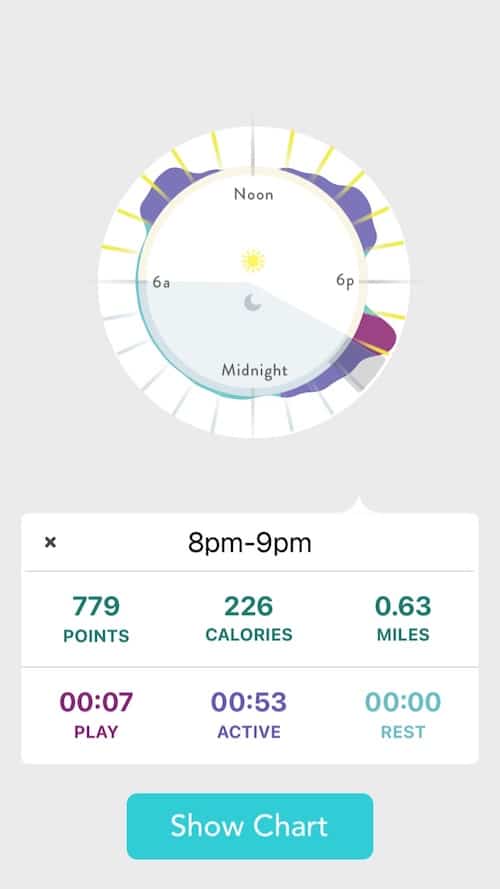
Party time for Roo at 8pm—all play, no rest.
Result #3: Reliability of Safe Zones & Real-Time Tracking (in a Rural Setting)
Roo is notorious for finding new ways to escape our current yard, running into the surrounding woods to chase deer or retrieve turtles (her favorite hobby). I was excited about the prospect of safe zones and having an extra layer of security for when she breaks free … in case she ever runs off with the reptiles instead of bringing them home with her.
Setting up a safe spot for our current location was relatively easy. I just connected to my home’s WiFi, entered my address, and gave the zone a name. Having it actually work in a more rural setting, however, was a different story.
If I had my phone with me, I would always get a notification when Roo and I left our home safe zone together. However, if Roo left with my parents (who weren’t set up as a caregiver) or I didn’t have my phone on hand, there was about a 50/50 chance of getting a notification. I’d also see glitches at times saying that Roo was 0.3 miles away from me when in actuality she was snoozing at my feet.
To test out the real-time location tracking feature, I had my dad take Roo out for a drive. Not only did I not receive an alert that she had left her safe zone, but the app said she was still with me, so I couldn’t turn on the “find Roo” feature which kick-starts the live tracking. About an hour later, after she was inside the house, safe with me, I received an alert that she had left the house and was out on a walk with me.
But that’s to be expected in such a rural setting. When at the park in town, I’ve noticed our location updates in realtime. So perhaps safe zones and location tracking would have been more accurate with stronger WiFi and cell signals.
Reviewer’s Verdict: Does Your Dog Need a FitBark GPS?
Well, that depends. The FitBark is a nice, affordable choice for pet parents looking to take a deep dive into their dog’s behavior and health. It’s especially useful to track activity levels for dogs who engage in different types of exercise outside of walking and hiking. But those interested in serious GPS tracking (especially in more rural locations) may want to focus on a higher-priced but more reliable option.
We think it’s likely to find some fans, especially among:
- Smaller pups or fussy fashionistas who need a lightweight option
- Pups whose daily exercise and activities fall outside traditional walks and hikes
- Budget-conscious pet parents who just need the basics for location tracking
- Pet parents who want to keep tabs when their pup is with a different caregiver
There are pet parents, however, who might want to consider other GPS tracking options:
- Pet parents of serious escape artists
- Dog guardians who live in rural areas with limited cell signal
- Pups who love to go off-leash on rural trails
- Pet parents who want all the bells and whistles of a GPS tracker
How We Chose the FitBark Activity Tracker
The FitBark GPS was selected based on a combination of our own hands-on testing, a comprehensive look at customer reviews across a wide variety of retail platforms, and interviews with veterinary experts, including Rover’s Dog People Panel. We’re also guided by the experience of living and playing alongside our own much-loved and strongly opinionated pets, who are never stingy with their feedback.
Further Reading

